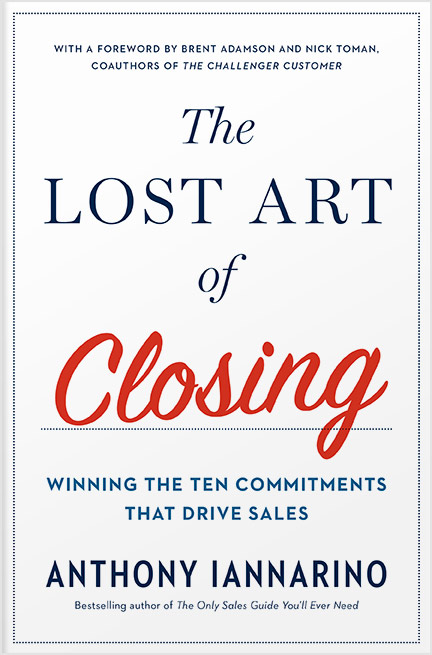The greater the overall value of the deals in your pipeline, the less you will need to rely on any one single to reach your goals. The less value you have in your pipeline, the more you must rely on a small number of deals to reach your targets.
Variable 1: Your Pipeline
One element of successfully reaching your sales goals is tracking the size and quality of your pipeline. The fewer deals you have in your pipeline, the more reliant you are on those deals. When you barely have enough pipeline to hit your target, every deal is critical. But when you have more than enough active deals, you can have deals fall through without harming your results.
There are dozens of reasons deals fall through, many of them outside of your control. At some point, you will have a deal evaporate because your client has a new strategic priority and is unable to pursue the results you were helping them improve. Or maybe your prospective client’s company will be purchased by a larger competitor, one that already has a partner in place. Deals will disappear because the company lost the funding for the initiative in next year’s budget. No small number of deals will simply lose steam and dissipate, even though there was some interest when you first met with your contact.
You are going to lose deals, even after working diligently through the sales conversation with the contacts inside your dream client’s company. Even when you believe you have done everything right and created massive value for your client, you may still lose a big deal. While you can’t stop bad things from happening, you can continually create new opportunities. Given how many sales variables you cannot control, it’s that much more important to control what you can.
Variable 2: Winning Deals
The more nonlinear the sales conversation is and the more you need consensus to win big deals, the more difficult it is to forecast the result with any real certainty. Forecasting has always been challenging since there will always be surprises, both good and bad. Every time B2B buyers, decision-makers, and decision-shapers change the way they buy, selling itself gets more difficult.
There are, however, ways to improve your ability to guide your client, helping them navigate the complex and scary process of making better decisions for the future of their business. As much as business acumen, insights, and situational knowledge matter, helping your prospective clients through a process that benefits them is where the rubber meets the road. In The Lost Art of Closing, you will find a practical, tactical guide to having these conversations with your prospects and clients, learning how to influence the process in a positive way for you and your clients.No more pushy sales tactics. The Lost Art of Closing shows you how to proactively lead your customer and close your sales. 
Why You Don’t Create Enough Opportunities
The best hedge against missing your target is to continuously create new opportunities. A good portion of the salespeople who don’t reach their goals do so because they don’t have enough opportunities. There are a number of reasons you might believe you don’t need to spend time creating new opportunities.
A False Sense of Security: For most of us, a full pipeline provides a false sense of security. When you believe you have enough opportunities and are confident that they will close, you might ignore the need to prospect. But once a major deal falls out of your pipeline, you’ll realize that you can’t replace it fast enough to reach your goal.
Overreliance on a Big Deal: You can be lulled into believing you’re on course just because you have a big deal in your pipeline, one large enough to ensure you meet your goal. Even when you’re confident, if a single deal would cause you to reach or miss your goal, you should not rely on that deal alone. Develop alternate paths to reaching your target.
Resistance to Prospecting: Many allegedly professional salespeople resist doing the work of prospecting and creating new opportunities. Some believe that prospecting is beneath them, while others are order-takers. Still, others believe that having done their time, they shouldn’t have to pick up the phone and cold call, even though their experience gives them the greatest ability to create value for a prospect. No matter why you do too little prospecting, eventually, the lack of opportunities will harm you.
No Accountability: One of the mistakes leaders make is holding people accountable for reaching their goals without including accountability for creating the opportunities necessary to reach those targets. No personal trainer would hold you accountable for losing weight without also monitoring your diet and activity levels! You can’t guarantee a goal; you can only do all the things that ensure that outcome. You need to be accountable to the process. 
Pipeline First
Your pipeline needs to grow for your revenue to grow. You’ll never win an opportunity that you don’t create. You’ll never schedule a client meeting that you don’t ask for—especially if you don’t use a “phone first” approach to prospecting—no matter what the rest of your prospecting sequence looks like.
Inputs create outputs. No input, or too little input, results in no output, or far too little output. Trusting the process means focusing on your consistency and persistent effort at the inputs. The outputs are the natural result of the inputs—not of luck, popularity, and certainly not blind hope that things will be different this time.

Get the Free eBook!
Want to master cold calling? Download my free eBook!
Many would have you believe that cold calling is dead, but the successful have no fear of the phone; they use it to outproduce their competitors.
Download Now








.jpg?width=768&height=994&name=salescall-planner-ebook-v3-1-cover%20(1).jpg)


